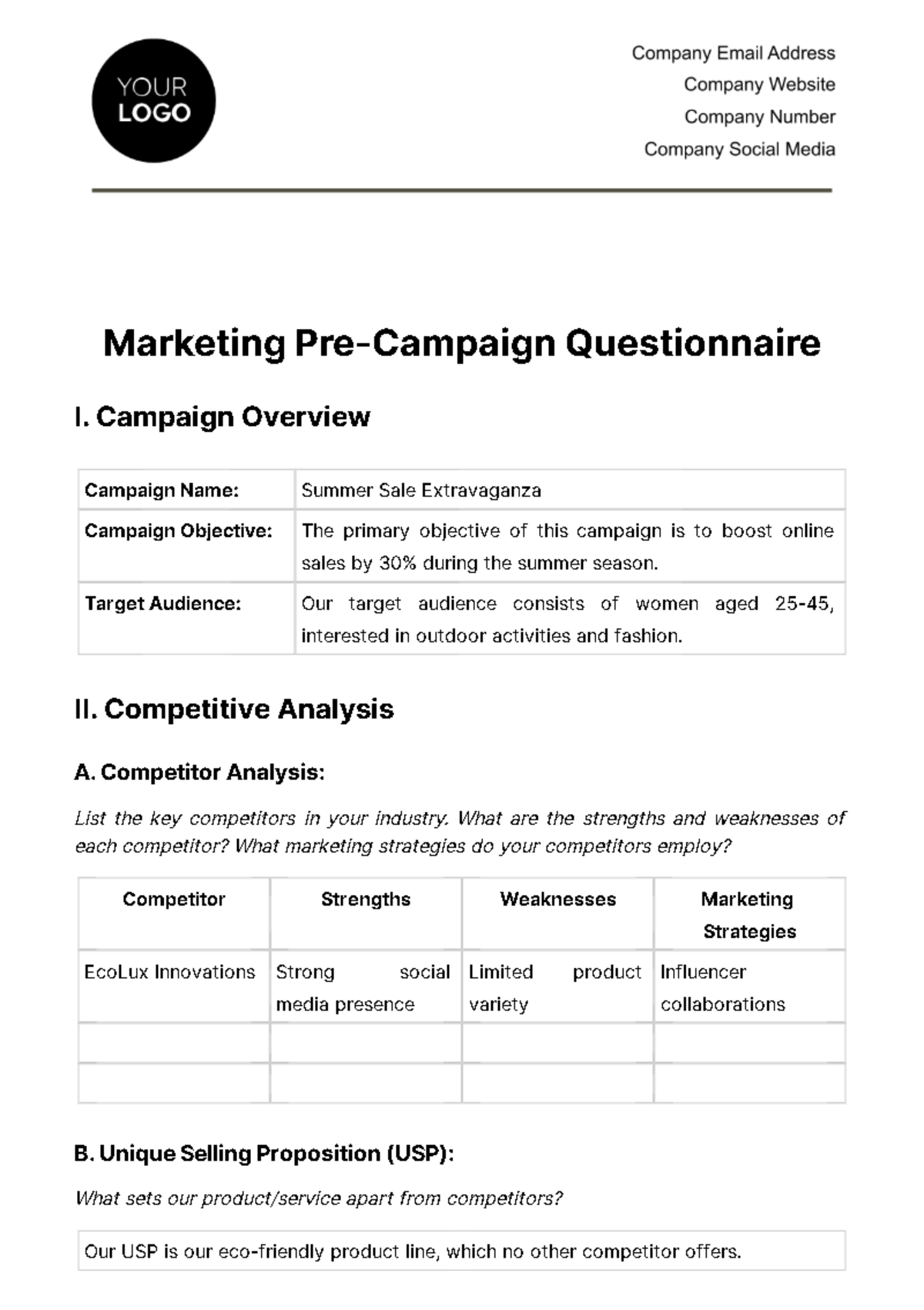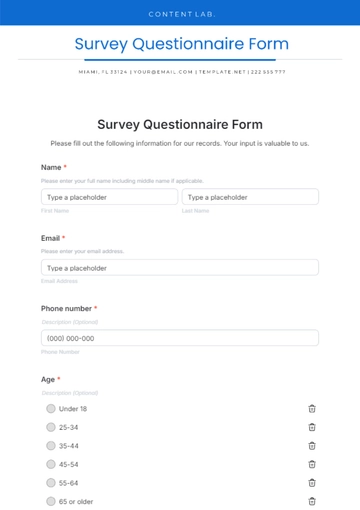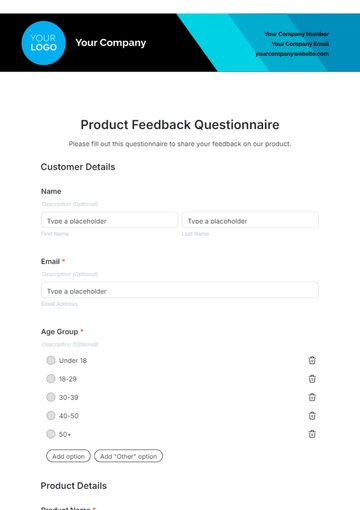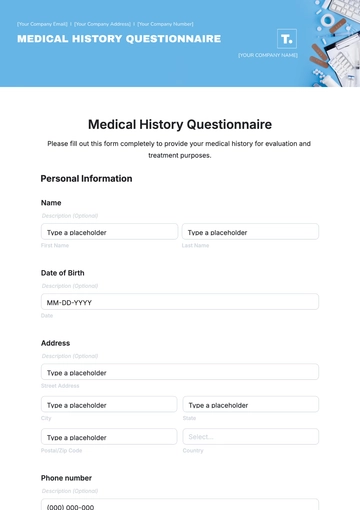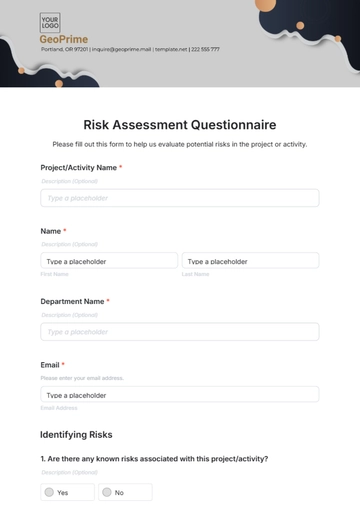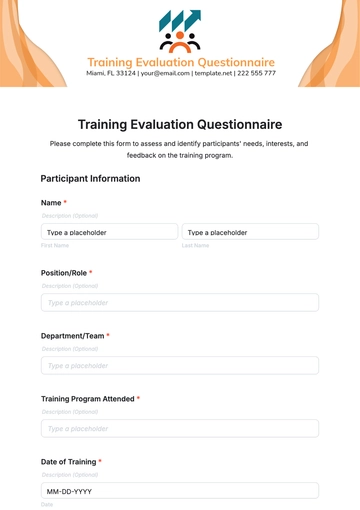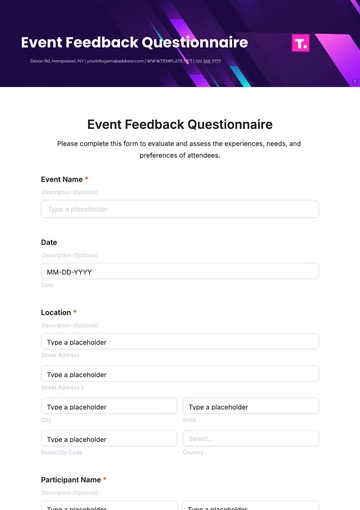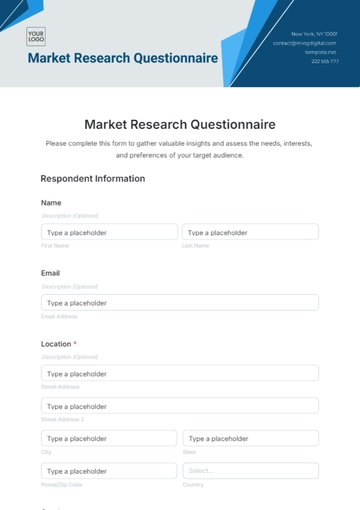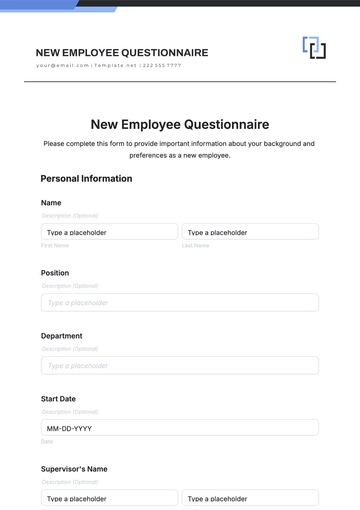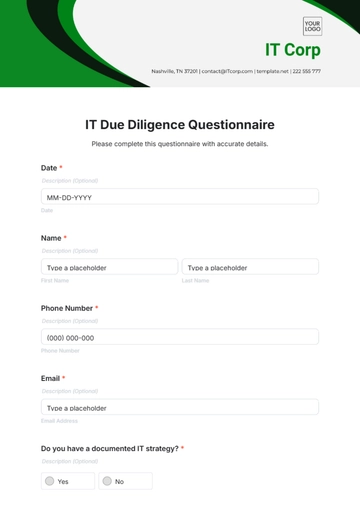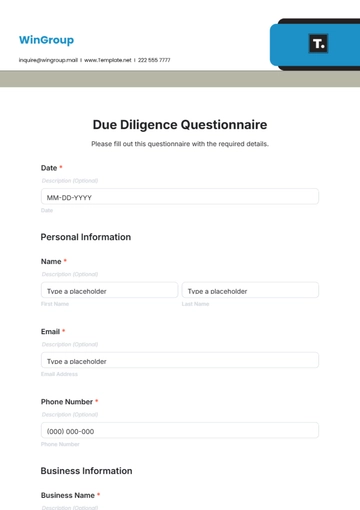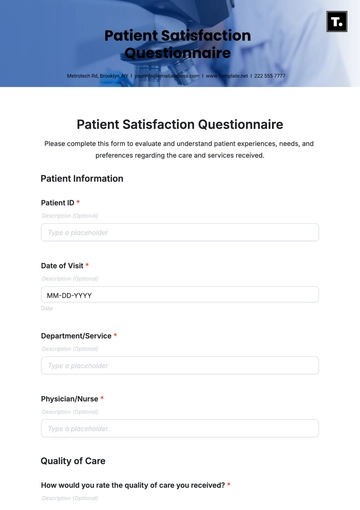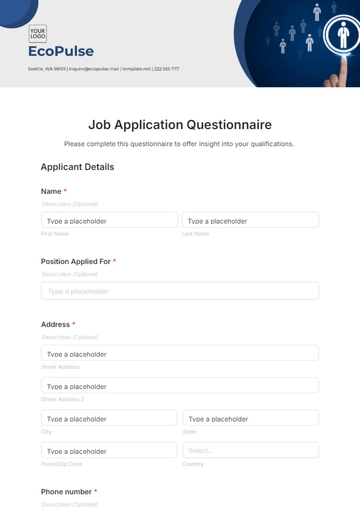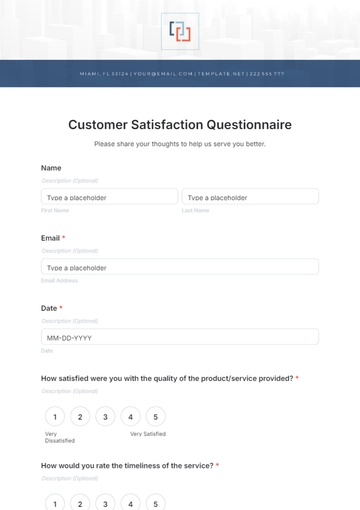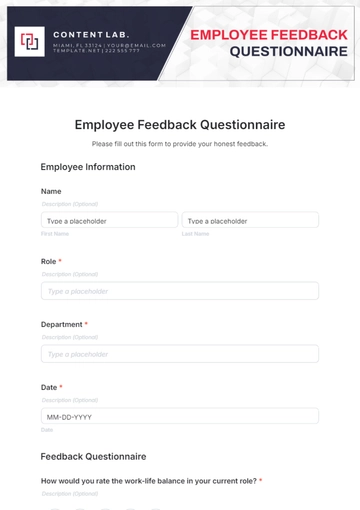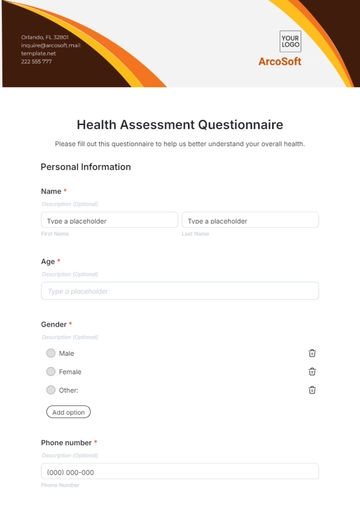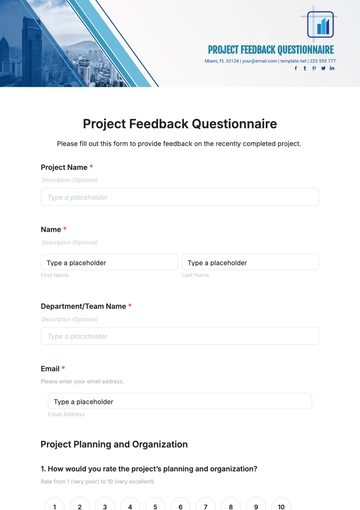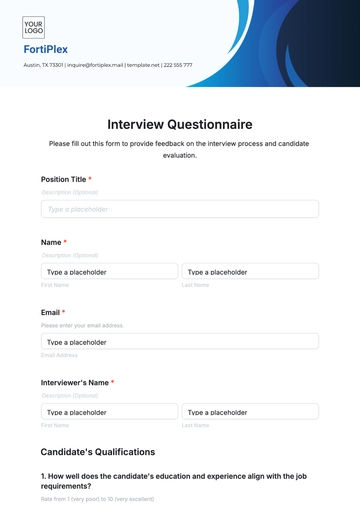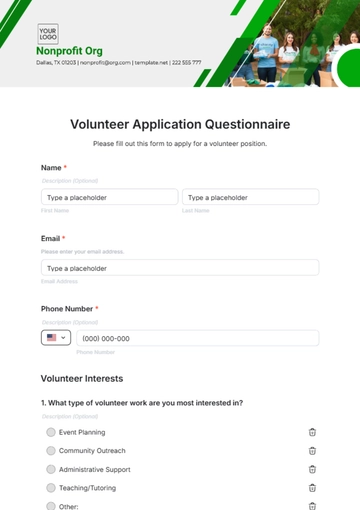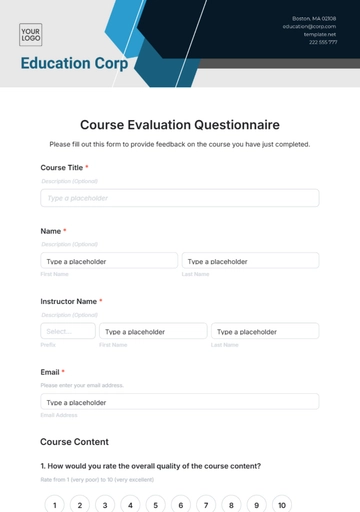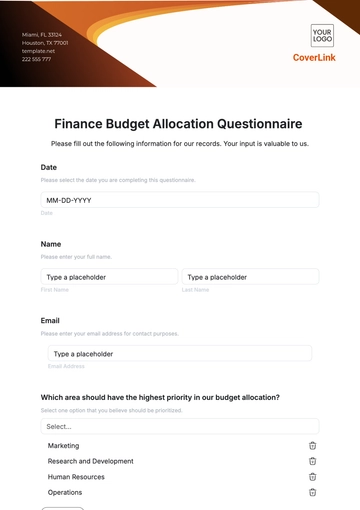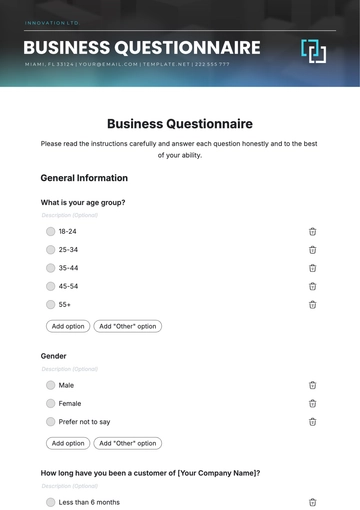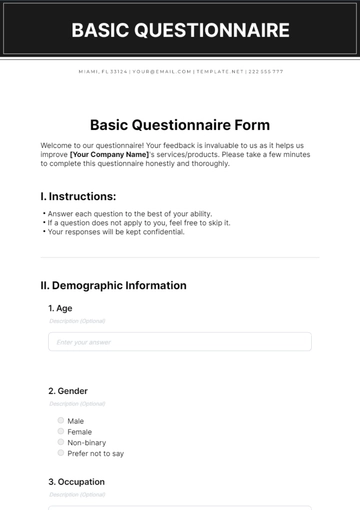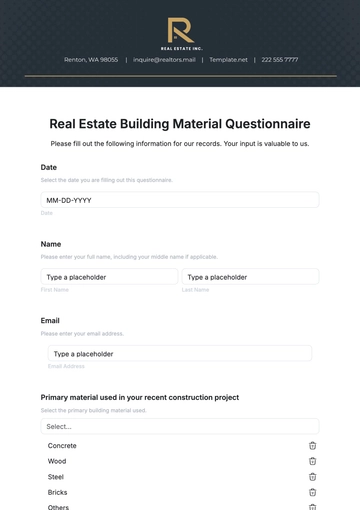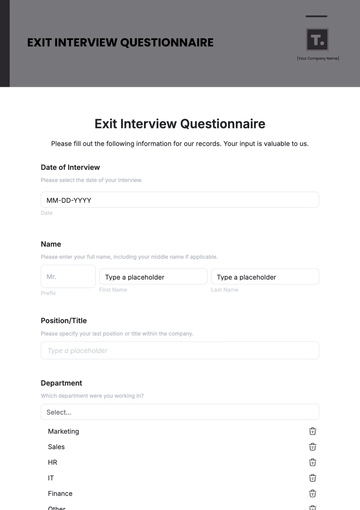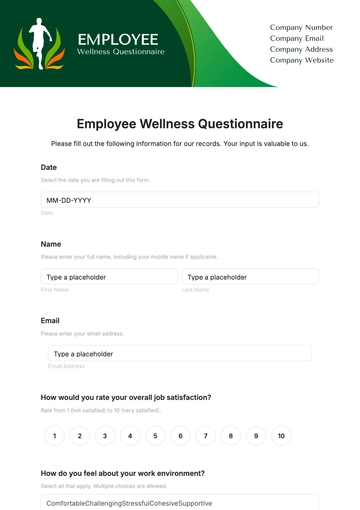Marketing Pre-Campaign Questionnaire
I. Campaign Overview
Campaign Name: | Summer Sale Extravaganza |
Campaign Objective: | The primary objective of this campaign is to boost online sales by 30% during the summer season. |
Target Audience: | Our target audience consists of women aged 25-45, interested in outdoor activities and fashion. |
II. Competitive Analysis
A. Competitor Analysis:
List the key competitors in your industry. What are the strengths and weaknesses of each competitor? What marketing strategies do your competitors employ?
Competitor | Strengths | Weaknesses | Marketing Strategies |
EcoLux Innovations | Strong social media presence | Limited product variety | Influencer collaborations |
| | | |
| | | |
B. Unique Selling Proposition (USP):
What sets our product/service apart from competitors?
Our USP is our eco-friendly product line, which no other competitor offers. |
III. Messaging and Content
A. Key Messages:
List the main messages or value propositions to be communicated in the campaign.
Sustainability: | "Support a greener planet with our eco-friendly products." |
Quality: | |
Savings: | |
B. Content Requirements:
Specify the types of content needed for the campaign (e.g., blog posts, videos, infographics).
Blog Posts: | 3 articles on sustainable living |
Videos: | |
Infographics: | |
IV. Channels and Distribution
A. Marketing Channels:
Identify the channels to be used (e.g., social media, email marketing, paid advertising, content marketing).
Social Media: | Facebook, Instagram |
Email Marketing: | |
Paid Advertising: | |
B. Budget Allocation:
Allocate the budget across different channels and activities.
Channel | Budget Allocation ($) |
Social Media | $5,000 |
Email Marketing | |
Paid Advertising | |
Content Creation | |
C. Distribution Plan:
Detail how content will be distributed and promoted through selected channels.
Social Media: | Daily posts, featuring products and sustainability tips. |
Email Marketing: | |
Paid Advertising: | |
V. Timeline and Milestones
A. Campaign Timeline:
Provide a schedule outlining key dates and milestones for the campaign.
Campaign Start Date: | July 1, 2050 |
Weekly Social Media Posts: | |
Mid-Campaign Email Newsletter: | |
VI. Measurement and KPIs
A. Key Performance Indicators (KPIs):
List the metrics that will be used to measure the campaign's success.
Sales Revenue Website Traffic Conversion Rate
|
B. Monitoring and Reporting:
Explain how and when KPIs will be tracked, and who will be responsible for reporting.
KPIs will be tracked weekly using Google Analytics and Facebook Insights. [Your Name] will be responsible for generating weekly reports. |
VII. Resources and Responsibilities
A. Team Members:
List the team members involved in the campaign and their roles.
B. External Resources:
Identify any external agencies or freelancers involved.
We have hired Jess Summers for video production. |
VIII. Legal and Compliance
A. Legal Requirements:
Highlight any legal or compliance considerations for the campaign (e.g., data privacy, industry regulations).
Ensure all email marketing complies with GDPR regulations. |
IX. Budget and Resources
A. Budget:
Specify the total budget for the campaign and any breakdown of expenses.
The total campaign budget is $20,000. |
X. Risk Assessment
A. Risk Analysis:
Identify potential risks or challenges that could impact the campaign's success and propose mitigation strategies.
Risk | Mitigation |
Poor weather affecting outdoor events. | Have a backup indoor plan. |
XI. Approval and Sign-Off
A. Approval Process:
Outline the process for gaining approval from stakeholders.
All campaign materials will be reviewed and approved by the marketing team before publication. |
B. Sign-Off:
Specify who needs to sign off on the campaign plan.
Final sign-off is required from Harold Johnson. |
Marketing Templates @ Template.net
